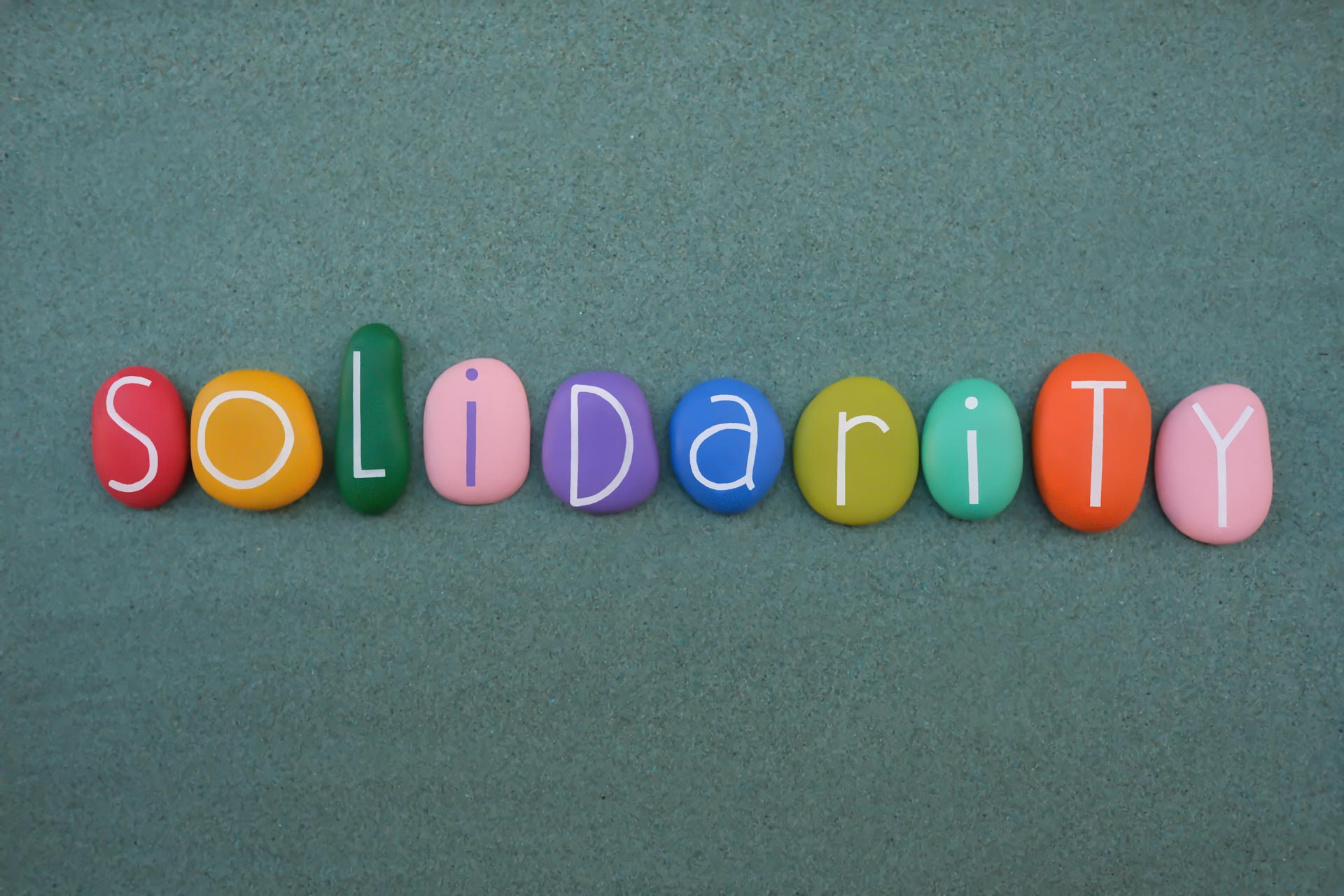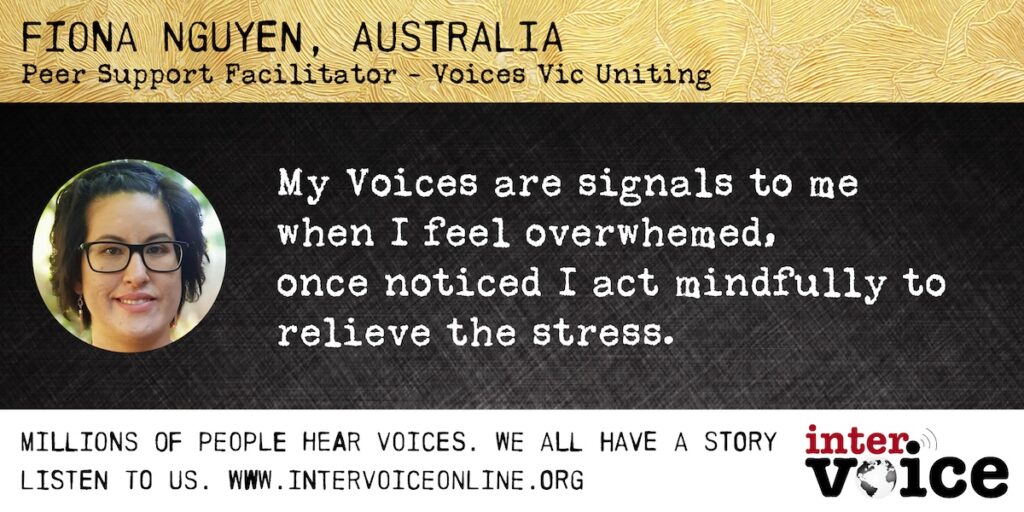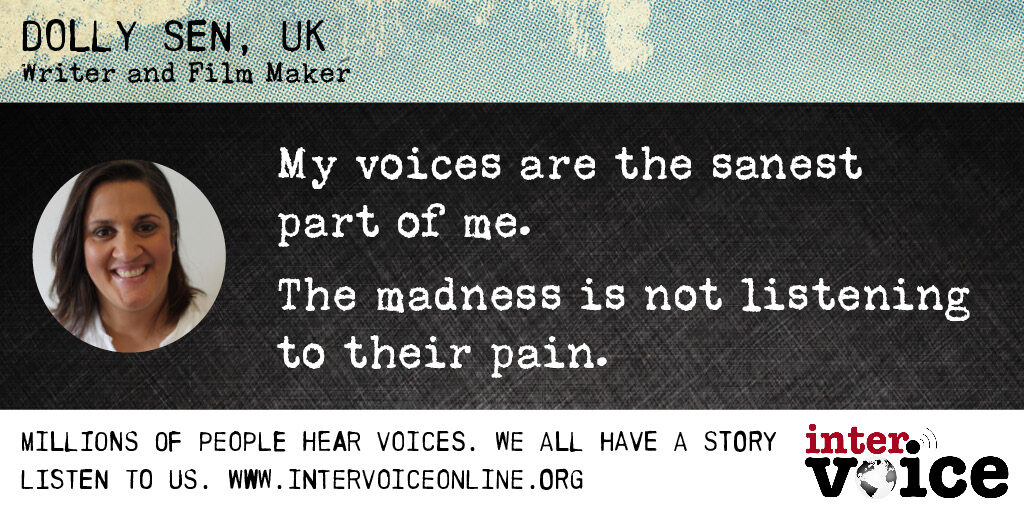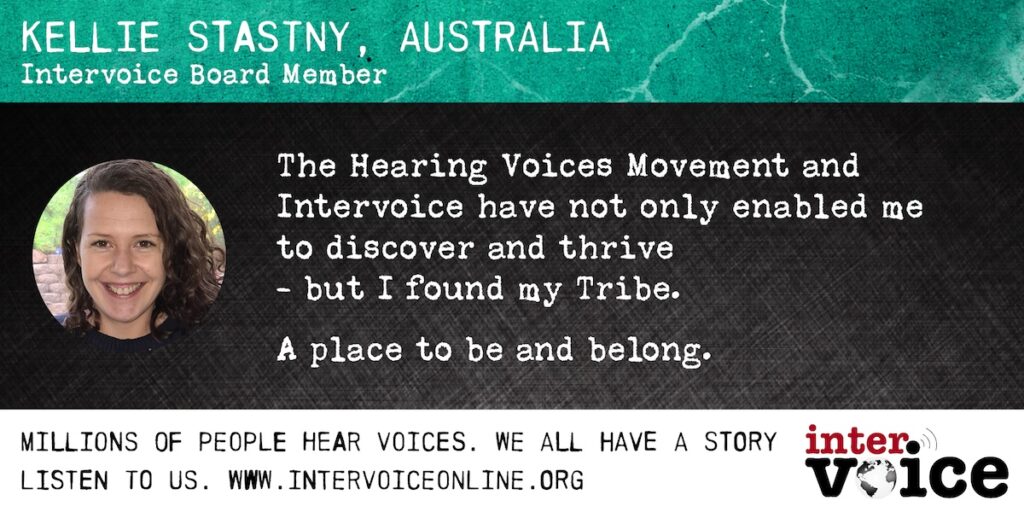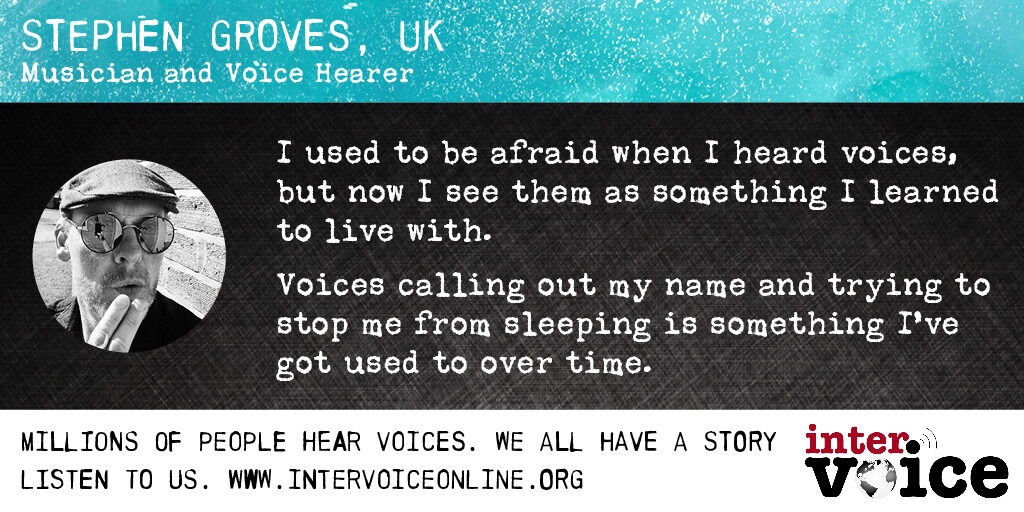This brings me to the second question. What are the influences of the traditional psychiatric care? They are more or less horror stories that we read. Intelligent capable people come in to the hands of a psychiatrist and are mentally broken down by medication and a system that leaves no hope for the future. A future painted as a life-long sentence of medication and no perspectives to realize ones capacities. This is most sad with the life stories that started with adolescent problems.
As with Stewart who told us: “I was only fifteen then. I got a diagnosis of schizophrenia and different professionals: nurses, social workers, psychologists and psychiatrists all gave the same sort of message time and time again: my prospects for the future were not great, I shouldn’t have expectations about school or work or having relationships”.
And like we read from the story of Antje: “Every time, when I was released from hospital and went back to normal life, there was this reduction of possibilities in my life. Nearly ten years later I was not interested in anything any more”.
We read about this kind of negative influence with practically every one who comes in to the hands of traditional psychiatry, where medicalisation of hearing voices breaks the person down. From all the stories it becomes clear that those who recovered did this outside the psychiatric system and found somebody who opened another perspective on hearing voices for them. However it is also good to read that these 50 people found other possibilities and they also regularly found them with professionals in mental health care, even with psychiatrists. I am happy that so many found open minded professionals, but sad that there are still so few. It is crystal clear from all these stories that the traditional approach has nothing to offer in the sense of recovery and is even very harmful for the development of the person involved. As far as the third question accepting voices is concerned a most important step seems to be that ones self, but also others, accept that they are real, and that others look at them with a perspective of the possibilities there are to cope with them. Therefore self help groups are very important and/or a more optimistic friend or professional, or a book like “Accepting Voices” to start the process of the possibility of recovery for oneself can have an important influence.
Like Ami said after reading “Accepting voices”: “This made the experience concrete and not mystifying. A process of building up was described, giving hope”
Or Eleanor when she says: “Pat Bracken ( an English psychiatrist) told me, this is just a normal experience. There is a context to it and a meaning. I started reading about this and thought whoa ‘may be I can be a part of this’”.
So, accepting is not concretely accepting everything of the voices as they are perceived, but is the beginning of looking differently at them; normalising them; being with many others who hear voices; creating hope and opening personal possibilities.
Accepting your voices and accepting yourself
Accepting starts in the way in which one changes one thoughts about once voices. Instead of interpreting them as a sign of madness, learn to see them as a possibility to cope with and as a meaningful experience.
Accepting ends with accepting one self.
As Jeanette says: “I had to recognize myself and especially to accept myself.”
Or Sasja: “You realize the consequences of hearing voices much later. You have to also change yourself, whether you like it or not. I don’t like changing. Now I am more philosophical, but before I wanted to control everything. I now accept myself much more”.
So accepting starts with accepting the reality of the voices and ends with accepting the reality of yourself as you are.
Changing the relationship with your voices also becomes part of the recovery process. In the beginning the voices are often seen as almighty and as being right,
Like Daan, who says “I thought I was bad because the voices called me all sorts of names. Later I realized that the voices were related to the physical abuse I´d experienced, because they have the characteristics of those people who abused me. Then I perceived that the voices became more or less intruding depending on the situation I was in. They become bad when there are conflicts in the house” .
So they become a kind of mirror of the living situation.
Or Eleanor “I began slowly to realize that yes he is a demon, but he was a personal demon. His demonic aspects were the unaccepted aspects of myself image”. Or Sue “the relationship with my voices has always been related to suppressed emotions. Whenever I have experienced traumatic experiences in my life, my voices seemed stronger” Or Mien “the ugly voice told me, the sexual abuse was a punishment, because I was lazy and stupid. But in the psychotherapy I got more insight in myself. I understood that voices have everything to do with how I feel myself”
Or Antje “It took me a quite a while to see the relationship between my voices and my life, so I realized that when I was angry and did not express my anger the voices became angry at me.”
Or Debra “I realized that the only power the voices had, was the power I gave them”.
How did these voice hearers manage to change their relationship with the voices.
It seems very important in the recovery process to change the relationship with ones voices and therefore I will give some examples of how voice hearers, in many different ways, managed to change their relationship with their voices.
Antje says: “A shaman therapist taught me to talk friendly and slowly to my voices and ask them to go to the place they belong. After three or four weeks, talking three or four times a day to the voices in this friendly slow way, they slowed down an became quieter. This made it possible to let the voices I heard for so many years vanish”.
Andreas says: “I realized that the continuous chain of hatred in the relationship between me and my voices needed a break through. Only when I acknowledged that many things the voices were telling me were true I became able to forgive them. Only when I asked the angry voices to forgive me, I became less depressed.”
Debra says: “I decided that everything I was doing so far was not working for me so doing the exact opposite made sense to me. First I changed my attitude towards them instead of bowing to their every whim; I embraced them as friends and welcomed their intrusions greeting them with kindness and respect. I then approached the voices as I would approach any relationship and began to put parameters around how and when they could contact me. I also began exploring other areas of my life and discovered what role the voices played ìn my life: “the need to feel connected to someone a need to belong”.
Eleanor says: “I realized that the fear I felt had created this vicious circle of avoidance and isolation. I tentatively began to test out what the voices claimed. Having realized he had not much power. I asked well were he is coming from. He is not coming from outside he can’t be. It can only be from me. The contempt and loathing he is expressing actually reflects how I feel about my self”
Ami says: “My relationship with my voices changed when I learned to see them as a signal of my problems when I learned to react positive to them. When said to me “look at her what a disaster” I looked in the mirror and thought they are right “I should dress properly”. From a negative influence it became a stimulus”.
Sue says: “I accepted my voices as real. Once I did that my relationship changed. I stopped looking for a cause outside myself. I looked for solutions in myself. I reclaimed my personal power” Flore writes: “Before I listened to the voice and just did what he said, I learned that I had my own opinion, my own mind. I did not have to follow the voice.”
Gina: “I have learned to ask them questions and they appeared to be talking about the things I was thinking about. They told me things that were true. I could not afford such a high rent I could not stay there”. Hannelore “I started to remember the time I heard voices before I got into the psychiatric care and how I managed to cope with them”.
Mien: “From my psychotherapist I learned how to cope with my voices. He told me I was not mad but that they were related to my past. That it is a rather normal experience you can talk about with others. Those voices express what has or is happening to me”.
Stewart: “After I set my self up as a self employed worker, my relationship with my voices changed, I think because my self esteem started to rise. Work gave me a purpose”.
Jeanette B: “One day my voices told me I had gone to far, I should be punished. I would die the coming night and fall into the hands of the devil. Although I was very afraid, I fell asleep and woke up still alive. This was a turning point I realized they spoke nonsense and since then I systematically closed them out, I started to concentrate on my own thoughts. Every thing I did I thought about like: “laying the table, I thought this is a fork this is a knife” etc. This gave me control. It took me five years before I had banned them for 100% of the time, but I got rid of them. “
You see that the ways people changes their relationship is very different but it seems quite an essential prerequisite to recover from the distress with voices.
Changing the relationship seems to become possible with the insight into and the changing nature of the power relationship between the person and the voices. The recognition that the person him/herself gives power to the voices and with the starting of the process of taking back power, it also becomes possible to change the relationship with the voices By either becoming friendlier and therefore less dependant on the voices or by the recognition that what the voices are saying has a value for the person However, a third possibility seems to be to back the full power of the voices.
We see the first two solutions of changing the relationship from a negative one into a positive one less often with people with sexual abuse as the originating trauma. With them we see less of a positive relationship, but a growing independence, becoming less a victim, taking back power by realising they have their own mind to make decisions with, finding solutions in themselves, living their own life. In both situations there are preliminary needs like: one needs to accept the voices as a reality; learn to talk about them with others; find support, not being mad; looking for their role in your life; testing the power of the voices and taking back power; making choices in starting to live your own life; using voices as a helping hand but not living their life as you originally might have interpreted them.
In his book Recovery an alien concept Ron Coleman has described five steps in this process like:
- “Others” to show you and to help you find another way and to be able to talk with about your voices.“Developing one
- self” in relation to what has happened to you, working through shame and guilt and building up self-esteem. Learning to recognize your needs resulting in emotional self-acceptance; growing out of the victim role and developing self awareness and develop ingyour self-worth again in social roles.
- “Taking ownership” because nobody else can own once experience and it is only the voice hearer who has the experienceof their voices. In the 50 stories people seldom told us about ownership, but describe what they learnt about understanding the connection between their voices and their personal position in life and how they learned to use this to their benefit.
- “Taking back power” is described in the 50 stories after testing the power of the voices and discovering that the voices have no more power then the voice hearer is giving them, which then leads to changes in the relationship with the voices. In the 50 stories more attention is given to changing the relationship with the voices then is done in Ron’s book.
- “Making choices” is done by the persons in the stories by taking up social roles extending social contacts and then building up their self-worth again
When a person develops more insight into the relationships between the voices and themselves, the voice hearers often say that during the recovery process the voices change from pathological into functional ones. They more or less mirror the persons way of being, feeling good or bad about themselves and about their lives, living in conditions they feel safe with or threatened with. The way a person feels and functions is also the basis of a persons changing mental health condition and the voices give expression of that.
In the recovery process voice hearers often learn first about the relationship between the voices and their past life experiences. Later they learn from the interaction with their voices and about the interaction of the voices with their daily lives in the here and now.
Firstly, this involves the relationship with the trauma they have endured, and then later the relationship with their way of being in the world of today. As a professional you can’t hurry this process, you can only support this process – but it is the process of the voice hearer developing themselves.
You can’t go more quickly then the pace at which the voice hearer develops. However, it is a broader development then coping with voices, it is also coping with life, growing, building up safer relationships and living conditions, developing the self and being the real owner of the voices, something that Ron Coleman has described very well.
Conclusion
The more the process of recovery develops, the more the relationship with the voices become functional, instead of pathological.
They become the mirrors of the soul and well being; a reflection of ones mental health.
This article based on a speech given at the Hearing Voices Congress, Copenhagen, Denmark 31 May 2007

